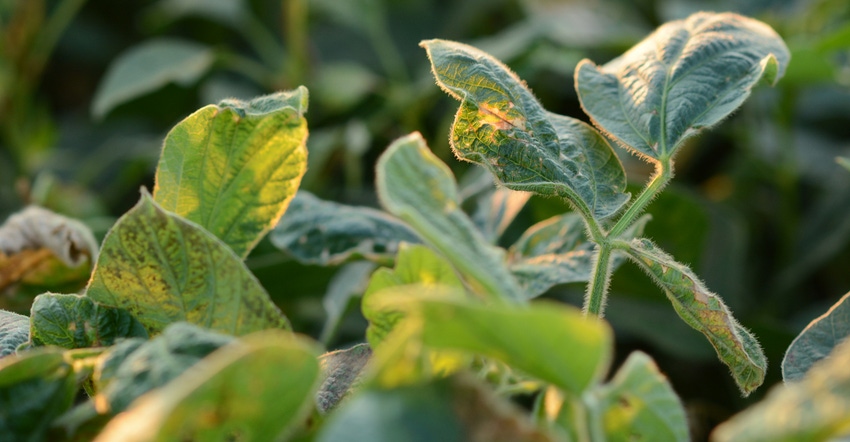
Illinois farmers have once again proved their ability to plant a lot of acres in a short window of time – and warm days mean crops are all but shooting out of the ground.
USDA’s National Agricultural Statistics Service says as of May 20, 96% of the state’s corn was planted, compared to 87% last year and the five-year average of 87%.
Soybean progress is even more dramatic, with 81% of the state’s soybeans planted by May 20, compared to 44% last year and the five-year average of 42%. Illinois soybeans are 57% emerged, compared to 16% last year and the five-year average of 15%.
With so many soybeans emerged — and continuing to emerge — postemergence spraying will be here before you know it. If dicamba herbicide is part of your crop protection plan, here’s a look at previous stories that provide information to help you keep it on target this year:
• Dicamba label requirements: 5 red flags. Want to keep in-season dicamba herbicide on target this season? Application expert Bob Wolf says that may not be an easy task. With the future of the technology riding on 2018 success, Wolf says the best way to reduce drift potential is to start with the right nozzle — and even that’s not as simple as it sounds, since the EPA-approved list wasn’t created with optimum weed control in mind. Wolf shares five concerns about nozzles, pressure and spray volume, and how they relate to speed and boom height.
• Spot temperature inversions like a pro. How do spray droplets travel 3 or more miles off target when there’s no wind? Two words: temperature inversion. That’s why Andrew Thostenson, North Dakota State University Extension specialist, says herbicide applicators need to recognize the signs and stop spraying when temperature inversions are present or setting up.
“Inversions don’t create spray drift, but they certainly exacerbate it,” he says, and offers four ways to identify inversions.
• Who’s liable? 6 things to know about dicamba for 2018. In-season dicamba application requirements may seem daunting and confusing, but Aaron Hager, weed specialist at the University of Illinois, says liability is crystal-clear. “The applicator is legally liable,” he says. “There’s a whole new list of things that now, when off-target movement occurs, applicators can be held accountable.”
With new labels, new rules and a new application season looming, Hager shares six things to keep in mind for 2018.
• Dicamba and insurance: What you need to know. The 2017 application season gave farmers and applicators a crash course on herbicide injury and insurance coverage. Ted Mies, a Waverly, Ill., farmer and crop insurance representative, says dicamba drift is not covered by crop insurance, but any yield loss will not impact the farm’s 10-year actual production history if farmers submit a claim.
“If your beans were hurt by dicamba drift and you turn in a claim to me as the agent, then come fall, if you have 20 bushels per acre instead of 60, it won’t go against APH,” he explains. “It will be blank for that year.” And while crop insurance won’t cover yield loss, liability insurance might.
• Dicamba: Insurance and liability in 2018. Here’s a look at complaints and claims in 2017, and how damage didn’t always equal loss. Farmers in Nebraska found the same, where yield impact wasn’t always as bad as symptoms.
• New dicamba tools: Plan, don’t decide. Monsanto and BASF rolled out new tools to help applicators navigate the complicated weather-related XtendiMax and Engenia label requirements. But the tools are for application planning, not decision-making — meaning they’re not for in-field use. Here’s how they work.
About the Author(s)
You May Also Like






